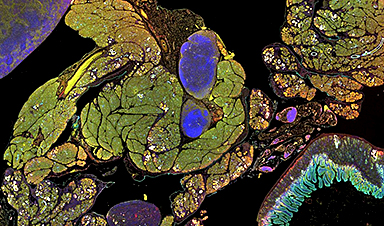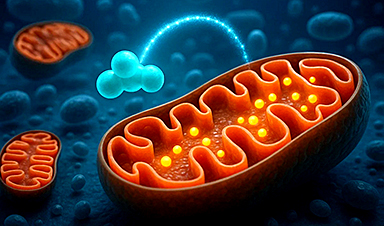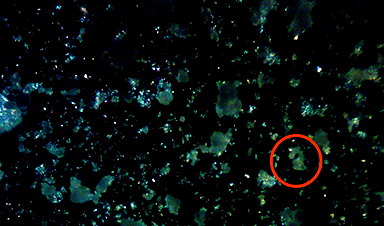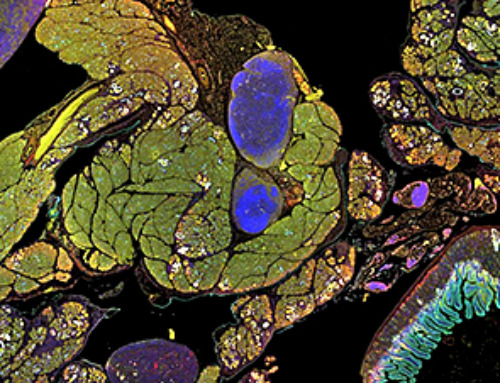A study in JAMA Oncology reveals that MyProstateScore 2.0, a new urine test analyzing 18 genes, surpasses PSA in detecting significant prostate cancers and could reduce unnecessary biopsies by up to 42%.
A new urine test that measures 18 genes associated with prostate cancer provides higher accuracy for detecting clinically significant cancers than PSA and other existing biomarker tests, according to a study published on April 18 in JAMA Oncology. The urine test, MyProstateScore 2.0 (MPS2), was shown to meaningfully reduce unnecessary prostate biopsies while providing highly accurate detection of worrisome prostate cancers, the researchers concluded.
“In nearly 800 patients with an elevated PSA level, the new test was capable of ruling out the presence of clinically significant prostate cancer with remarkable accuracy. This allows patients to avoid more burdensome and invasive tests, like MRI and prostate biopsy, with great confidence that we are not missing something,” said Jeffrey Tosoian, MD, assistant professor of Urology and director of Translational Cancer Research at Vanderbilt University Medical Center, who is first author of the study.
Jeffrey Tosoian, MD, assistant professor of Urology and director of Translational Cancer Research at Vanderbilt University Medical Center, who is first author of the study.
Credit: Vanderbilt University Medical Center
Background on Prostate Cancer Screening
Prostate cancer is the most common cancer and the second leading cause of cancer death among men in the U.S. The PSA blood test has been widely used as the initial step in prostate cancer screening. Although PSA is elevated in the vast majority of men with prostate cancer, it is also elevated in a significant proportion of men without cancer.
As a result, the use of elevated PSA alone to prompt a prostate biopsy results in numerous unnecessary biopsies. Although generally safe, prostate biopsies are invasive, uncomfortable, and carry some risk of worrisome complications. Therefore, for patients with an elevated PSA, there is a great need for a second-line test to better identify which men truly need a biopsy and which do not.
Development of MPS2
Because some low-grade, prostate cancers do not require treatment and can be safely monitored with an approach termed active surveillance, the MPS2 test was developed to detect more specifically the higher-grade, “clinically significant” cancers in need of early detection and treatment.
To do this, the research team analyzed prostate tumors from across the U.S. to identify novel genes more often detected in the presence of significant cancers. The most informative 18 genes were combined into the MPS2 test, which was then tested in a National Cancer Institute trial of men with an elevated PSA level.
Uniquely, the authors were able to compare the novel test to other prostate cancer tests, including the original, two-gene MPS test.
Study Results and Comparison
The study involved 743 men with a median age of 62 years and a median PSA level of 5.6. While existing biomarker tests could have avoided 15% to 30% of unnecessary biopsies (i.e. biopsies that were negative or found low-grade cancers not requiring treatment), use of MPS2 would have avoided 35% to 42% of unnecessary biopsies without missing any additional diagnoses of clinically significant cancer.
The improvement was even more pronounced in men with a history of a previous negative biopsy, reducing the rate of unnecessary biopsies from 46% to 51% with use of MPS2, as compared to 9% to 21% for existing tests.
Future Research and Limitations
Multiparametric magnetic resonance imaging (mpMRI) is another second-line test that has been utilized, but while it can improve detection of clinically significant prostate cancer, interpretation of the results can be subjective and vary significantly. The authors also noted that mpMRI is not available in some community settings and is not an option for some patients. The current study was not designed to compare biomarkers to mpMRI, but the researchers are currently conducting a prospective, multicenter trial for that purpose.
In patients shown to be without clinically significant prostate cancer by the new test, the authors concluded that the “externally validated performance of MPS2 supports its effectiveness in accurately ruling out the need for mpMRI and biopsy altogether.” They noted a limitation of the study was that only 13% of participants were African American. Because prostate cancer is more prevalent among African American men, the research team is currently pursuing further analyses in more racially diverse populations.
For more on this research, see New Urine-Based Test Detects High-Grade Prostate Cancer.
Reference: “Development and Validation of an 18-Gene Urine Test for High-Grade Prostate Cancer” by Jeffrey J. Tosoian, Yuping Zhang, Lanbo Xiao, Cassie Xie, Nathan L. Samora, Yashar S. Niknafs, Zoey Chopra, Javed Siddiqui, Heng Zheng, Grace Herron, Neil Vaishampayan, Hunter S. Robinson, Kumaran Arivoli, Bruce J. Trock, Ashley E. Ross, Todd M. Morgan, Ganesh S. Palapattu, Simpa S. Salami, Lakshmi P. Kunju, Scott A. Tomlins, Lori J. Sokoll, Daniel W. Chan, Sudhir Srivastava, Ziding Feng, Martin G. Sanda, Yingye Zheng, John T. Wei, Arul M. Chinnaiyan, EDRN-PCA3 Study Group, Ian M. Thompson, Mohamed Bidair, Adam Kibel, Daniel W. Lin, Yair Lotan, Alan Partin, Samir Taneja, David H. Howard, Meredith M. Regan, Jack Groskopf, Jonathan Chipman, Dattatraya H. Patil, Douglas S. Scherr, Jacob Kagan, Jing Fan, Aron Y. Joon, Leonidas E. Bantis and Mark A. Rubin, 18 April 2024, JAMA Oncology.
DOI: 10.1001/jamaoncol.2024.0455
Tosoian is co-first author with Yuping Zhang, PhD, and Lanbo Xiao, PhD, professors at the University of Michigan, where Tosoian and Arul Chinnaiyan, MD, PhD, initiated the study. Chinnaiyan and John T. Wei, MD, are the study’s senior authors. Other Vanderbilt researchers who contributed to the study are Nathan Samora, MD, and Hunter Robinson, MD.
The study received funding support from the Prostate Cancer Foundation Young Investigator Award (Tosoian), Michigan-Vanderbilt EDRN Biomarker Characterization Center (U2C CA271854), and the EDRN DMCC (U24 CA086368).
News
Studies detail high rates of long COVID among healthcare, dental workers
Researchers have estimated approximately 8% of Americas have ever experienced long COVID, or lasting symptoms, following an acute COVID-19 infection. Now two recent international studies suggest that the percentage is much higher among healthcare workers [...]
Melting Arctic Ice May Unleash Ancient Deadly Diseases, Scientists Warn
Melting Arctic ice increases human and animal interactions, raising the risk of infectious disease spread. Researchers urge early intervention and surveillance. Climate change is opening new pathways for the spread of infectious diseases such [...]
Scientists May Have Found a Secret Weapon To Stop Pancreatic Cancer Before It Starts
Researchers at Cold Spring Harbor Laboratory have found that blocking the FGFR2 and EGFR genes can stop early-stage pancreatic cancer from progressing, offering a promising path toward prevention. Pancreatic cancer is expected to become [...]
Breakthrough Drug Restores Vision: Researchers Successfully Reverse Retinal Damage
Blocking the PROX1 protein allowed KAIST researchers to regenerate damaged retinas and restore vision in mice. Vision is one of the most important human senses, yet more than 300 million people around the world are at [...]
Differentiating cancerous and healthy cells through motion analysis
Researchers from Tokyo Metropolitan University have found that the motion of unlabeled cells can be used to tell whether they are cancerous or healthy. They observed malignant fibrosarcoma [...]
This Tiny Cellular Gate Could Be the Key to Curing Cancer – And Regrowing Hair
After more than five decades of mystery, scientists have finally unveiled the detailed structure and function of a long-theorized molecular machine in our mitochondria — the mitochondrial pyruvate carrier. This microscopic gatekeeper controls how [...]
Unlocking Vision’s Secrets: Researchers Reveal 3D Structure of Key Eye Protein
Researchers have uncovered the 3D structure of RBP3, a key protein in vision, revealing how it transports retinoids and fatty acids and how its dysfunction may lead to retinal diseases. Proteins play a critical [...]
5 Key Facts About Nanoplastics and How They Affect the Human Body
Nanoplastics are typically defined as plastic particles smaller than 1000 nanometers. These particles are increasingly being detected in human tissues: they can bypass biological barriers, accumulate in organs, and may influence health in ways [...]
Measles Is Back: Doctors Warn of Dangerous Surge Across the U.S.
Parents are encouraged to contact their pediatrician if their child has been exposed to measles or is showing symptoms. Pediatric infectious disease experts are emphasizing the critical importance of measles vaccination, as the highly [...]
AI at the Speed of Light: How Silicon Photonics Are Reinventing Hardware
A cutting-edge AI acceleration platform powered by light rather than electricity could revolutionize how AI is trained and deployed. Using photonic integrated circuits made from advanced III-V semiconductors, researchers have developed a system that vastly [...]
A Grain of Brain, 523 Million Synapses, Most Complicated Neuroscience Experiment Ever Attempted
A team of over 150 scientists has achieved what once seemed impossible: a complete wiring and activity map of a tiny section of a mammalian brain. This feat, part of the MICrONS Project, rivals [...]
The Secret “Radar” Bacteria Use To Outsmart Their Enemies
A chemical radar allows bacteria to sense and eliminate predators. Investigating how microorganisms communicate deepens our understanding of the complex ecological interactions that shape our environment is an area of key focus for the [...]
Psychologists explore ethical issues associated with human-AI relationships
It's becoming increasingly commonplace for people to develop intimate, long-term relationships with artificial intelligence (AI) technologies. At their extreme, people have "married" their AI companions in non-legally binding ceremonies, and at least two people [...]
When You Lose Weight, Where Does It Actually Go?
Most health professionals lack a clear understanding of how body fat is lost, often subscribing to misconceptions like fat converting to energy or muscle. The truth is, fat is actually broken down into carbon [...]
How Everyday Plastics Quietly Turn Into DNA-Damaging Nanoparticles
The same unique structure that makes plastic so versatile also makes it susceptible to breaking down into harmful micro- and nanoscale particles. The world is saturated with trillions of microscopic and nanoscopic plastic particles, some smaller [...]
AI Outperforms Physicians in Real-World Urgent Care Decisions, Study Finds
The study, conducted at the virtual urgent care clinic Cedars-Sinai Connect in LA, compared recommendations given in about 500 visits of adult patients with relatively common symptoms – respiratory, urinary, eye, vaginal and dental. [...]






















